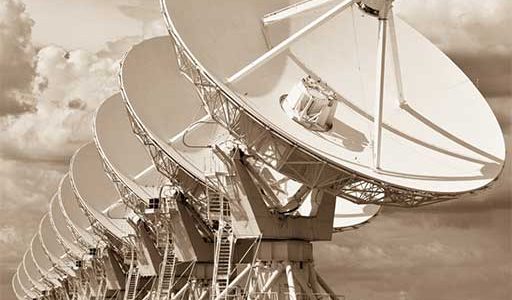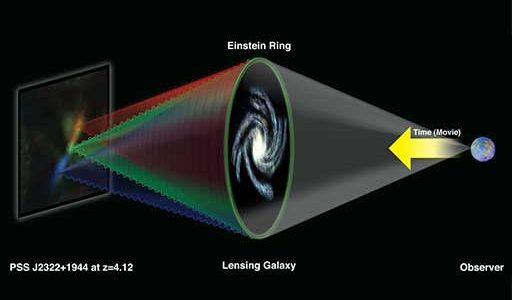Latest NRAO News
News is managed by NRAO News & Public Information. Questions about News? Have a story to share? Want to interview a scientist or create new media about our telescopes?

Astronomers have found the first evidence of a magnetic field in a jet of material ejected from a young star, a discovery that points toward future breakthroughs in understanding the nature of all types of cosmic jets and of the role of magnetic fields in star formation.

Astronomers studying the Milky Way have discovered a large number of previously-unknown regions where massive stars are being formed. Their discovery provides important new information about the structure of our home Galaxy and promises to yield new clues about the chemical composition of the Galaxy.

For the first time, astronomers have found a supernova explosion with properties similar to a gamma-ray burst, but without seeing any gamma rays from it.

Astronomers have found a giant magnetic loop stretched outward from one of the stars making up the famous double-star system Algol. The scientists used an international collection of radio telescopes to discover the feature, which may help explain details of previous observations of the stellar system.

Astronomers using the National Science Foundation’s Very Large Array radio telescope have gained tantalizing insights into the nature of the most distant object ever observed in the Universe — a gigantic stellar explosion known as a Gamma Ray Burst.

Astronomers have discovered a unique double-star system that represents a missing link stage in what they believe is the birth process of the most rapidly-spinning stars in the Universe — millisecond pulsars.

Astronomers may have solved a cosmic chicken-and-egg problem — the question of which formed first in the early Universe — galaxies or the supermassive black holes seen at their cores.

Astronomers have found the most distant water yet seen in the Universe, in a galaxy more than 11 billion light-years from Earth.

By cleverly unraveling the workings of a natural cosmic lens, astronomers have gained a rare glimpse of the violent assembly of a young galaxy in the early Universe.

The Expanded Very Large Array, part of the National Radio Astronomy Observatory, took a giant step toward completion on August 7 with successful testing of advanced digital hardware designed to combine signals from its upgraded radio-telescope antennas to produce high resolution images of celestial objects.





